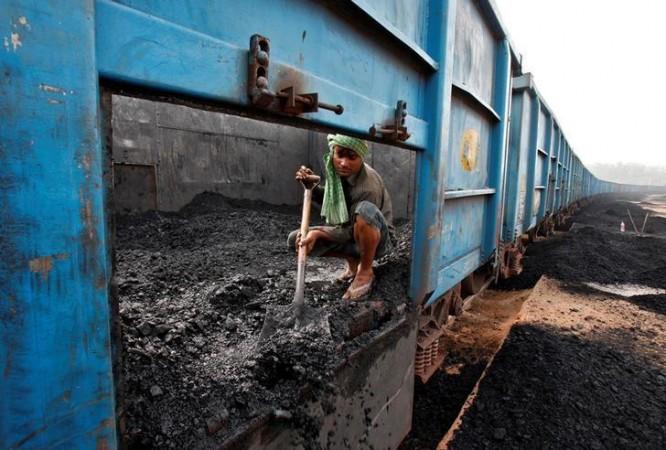Lately, India's coal situation has led to a national conversation on whether it's just a temporary shortage or a real crisis staring in the eye. Finance Minister Nirmala Sitharaman though, had reportedly put an end to the discussions even before they began, by calling all the energy worries, "as absolutely baseless." Meanwhile, the former and current bureaucrats in the power ministry brainstorm over how did the nation end up with just about four days of coal reserves left?
In a recent interview to The Wire, Anil Swarup, former coal secretary of India, looks back at a time when India was contemplating exporting surplus coal to Bangladesh. Which was not long ago in 2016, when the nation had ample coal stock worth Rs 35,000 crore. Regardless of which political ideology one subscribes to, there's a growing ruckus over one collective question; What went wrong and who is responsible?
"We are certainly short of coal," he minces no words before breaking down the current situation into two aspects. "There is demand side management and then there is supply side management. Covid economy is recovering, hence there is a demand for power and this has also led to rise in coal prices. These are aspects over which we have no control as demand will go up and down. However, what we have control over is the supply side management."
Which boils down to two sources; Coal India Limited (CIL) which supplies 80 per cent of the coal required in India and the private sector which provides the remaining 20 per cent.

The demand has surged and how
As per one of the reported estimates, recently over 28 million households have got new connection. Mostly being the lower and middle class income that have bought new TV sets, lights, refrigerator, etc. Add to it, the extended monsoon rains, flooded mines and disrupted transport.
When International Business Times got in touch with Coal India Limited, its spokesperson K. Sunil Kumar, firstly explains the "combination of many factors that led to the four-day stock situation." He says, "Primary reason was power generation spiralling up to record levels to match the increased demand for power. Added to that, excessive and extended monsoon impinged upon CIL's production and despatches. Imported coal-based power plants curtailing their generation due to high international coal prices had shifted the demand burden to domestic coal-based generators, thereby exacerbating the situation. In turn, CIL had to meet this coal demand to the tune of 15 MTs which was not factored in its annual plan. Inadequate coal-stock build-up by thermal power plants at an appropriate time, earlier in the year, was another crucial factor."
As for CIL's manpower being deployed for other projects of the Centre, he says, "While it would be bad form to comment on the views expressed by the individual, the fact is that during 2015-16 some of the CIL's manpower was actively engaged in Swachh Bharat mission, but not to the detriment of its core operations. And that is now in the past."
Private sector problems
When a country is looking at zero coal stocks, even 20 per cent becomes a significant figure. 20 per cent of the coal comes from the private sector, the problem which began with, as Swarup says, "With the rampage in CAG in 2014 who ensured that more than 200 blocks of allocation were cancelled. There were 90 million tonnes of coal being produced by the private sector at that point in time and it all stopped."
A situation that necessitated the reviving of the new coal blocks, but for unrealistic bidding because of which many companies failed to function. The final nail in the coffin was the war between states and the Centre, which meant a lack of clearances. He adds, "Commercial mining should have started in 2015, this file was not sent to them and this decision was taken only after 5 years."
As for the CIL's financial prudence being questioned and the investment in fertilisers, Kumar calls the organisation's financial fundamentals very strong. "CIL is almost a debt-free company. Much of coal mining and evacuation projects are met through their own funds. The company's Board determines the dividend payment to all its shareholders including the Government of India. It would be incorrect to state that CIL's expansion plans are hit by a lack of funds. At the closure of last financial CIL had in excess of Rs. 17,200 crores cash and bank balance after adjusting the short-term borrowings. An investment to the tune of Rs 10,500 crores in CIL's 35 first mile connectivity projects is funded internally."
The way out
Many think tanks from the power industry have tossed immediate solutions for the problem. The most apparent and short term fix is borrowing from the private coal mines where surplus is available, which can be later replenished by CIL. He calls the situation, no longer a crisis.

"In the initial stages itself, when the demand far outstripped the rate of supply, CIL embarked upon a multi-pronged approach to shore up the stocks at power plants. These include offering coal on 'as-is-where' basis through rail-cum-road mode from sources where the high stock was available. 23 such mines carrying 40.3 MTs of stock as of 16 August were identified. Supply to the power plants carrying stock of zero to six days was prioritized by preparing a contingency supply plan to increase their stock. In case of availability issue at linked mines, alternative sources have already been allocated for seamless running of power plants."
He adds, "Currently, despatches to the power sector are going up steadily with around 21 Lakh tonnes of coal per day being pumped in from CIL and other sources. Whereas the consumption of the powerhouses is hovering around 17 to 18 Lakh tonnes of coal per day. This means around 3 lakhs tonnes per day is adding up to the stock at power plants on daily basis. So there is no need to press the panic button or be worried."














